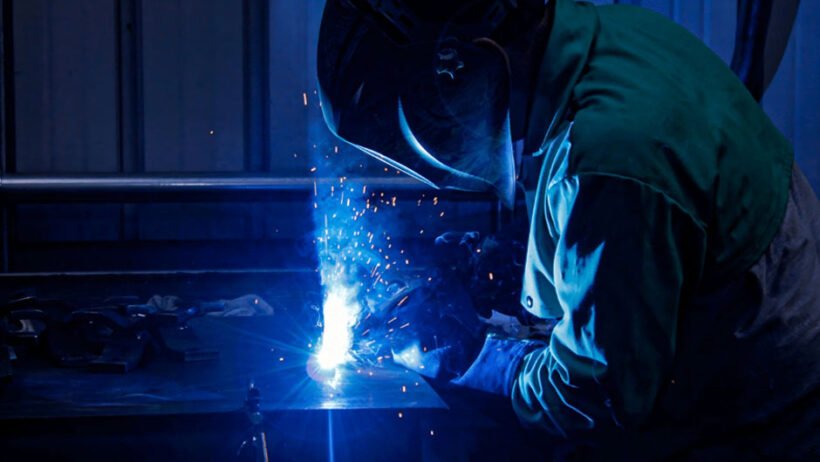In today’s fast-changing manufacturing landscape, precision, speed, and energy efficiency define success. Whether you’re producing automotive components, aerospace parts, or delicate electronics, welding remains central to your operations. Traditional welding methods, though reliable, struggle to meet the demands of modern production environments.
That’s where the industrial laser welder comes in — combining pinpoint accuracy with automation and advanced controls to deliver cleaner, faster, and stronger welds. Understanding how this technology works and what it offers can help you choose smarter investments for long-term productivity and performance.
The Rise of Industrial Laser Welding
From Traditional to High-Tech Welding
For decades, manufacturers relied on conventional welding processes such as TIG, MIG, and arc welding. While effective, these methods involve high heat, slower speeds, and greater material distortion. By contrast, an industrial laser welder uses a concentrated beam of light to melt materials with remarkable precision — minimizing deformation and maximizing consistency.
Laser welding emerged in high-end industries like aerospace and defense, where tight tolerances are critical. Today, as costs decrease and efficiency improves, it’s become mainstream across industries ranging from automotive to medical device manufacturing.
Why the Shift Matters
The transition isn’t just about technology—it’s about performance, sustainability, and competitiveness.
- Higher speed: Laser welding can be up to five times faster than traditional welding.
- Lower rework: Precision control minimizes scrap and defect rates.
- Cleaner processes: Reduced spatter and fume generation align with modern environmental standards.
These advantages make industrial laser welders not just an upgrade but a necessity for manufacturers aiming to stay ahead.
How Industrial Laser Welders Work
The Science Behind the Beam
At the heart of an industrial laser welder lies a high-intensity light source, amplified through optical components and directed onto the work surface. The focused beam produces localized melting and fusion, achieving strong welds with minimal heat spread.
Modern systems use one of three main laser types:
- Fiber lasers – The most efficient, offering low maintenance and high beam quality.
- CO₂ lasers – Ideal for non-metal materials and thicker sections.
- Diode lasers – Compact, energy-efficient options for smaller applications.
Each type has its advantages, but fiber lasers have become the dominant force due to their reliability, energy savings, and adaptability for automation.
Components of a Modern System
An industrial laser welding setup typically includes:
- Laser source (fiber, CO₂, or diode)
- Optical system (mirrors, lenses, beam delivery fibers)
- Motion control system (robotic arm or CNC table)
- Cooling and shielding mechanisms
- Human-machine interface (HMI) for control and monitoring
Together, these elements create a closed-loop system capable of unmatched precision and repeatability.

Key Benefits of Industrial Laser Welders
Precision and Repeatability
Unlike manual welding, where operator skill and fatigue influence results, laser welders deliver consistency through automation and beam control. Even complex geometries or micro-scale components can be welded with identical quality every time.
Speed and Productivity
Laser welders can perform continuous or pulsed welds at incredible speeds. With automated feeding systems and multi-axis control, they can weld multiple joints simultaneously — dramatically improving throughput.
Energy Efficiency and Cost Reduction
Modern fiber-based systems convert over 40% of input energy into laser output, far exceeding traditional efficiency rates. This not only lowers energy costs but also reduces cooling requirements, extending equipment life.
Material Versatility
Industrial laser welders can process a wide variety of materials, including:
- Stainless and carbon steel
- Aluminum and copper alloys
- Titanium and nickel-based materials
This flexibility makes them ideal for industries like automotive, aerospace, and renewable energy manufacturing.
Cleaner, Safer Work Environments
Because laser welding is a non-contact process, it generates less noise, vibration, and airborne contaminants. Combined with proper fume extraction, it supports safer and cleaner production lines.
Applications Across Industries
Automotive Manufacturing
Laser welding is a cornerstone of modern vehicle assembly. From battery housing in electric vehicles to lightweight aluminum frames, precision welding ensures strength while maintaining design efficiency.
Aerospace and Defense
In aerospace, precision and safety are paramount. Laser welders deliver the accuracy needed for turbine blades, fuel systems, and structural components — all while minimizing distortion and ensuring perfect seams.
Electronics and Medical Devices
For electronics and medical equipment, small-scale precision is essential. Laser welders are used to join delicate components without heat damage, ensuring reliability in critical applications such as pacemakers, sensors, and surgical tools.
Renewable Energy and Industrial Fabrication
As renewable energy infrastructure expands, laser welders are used to produce components for solar panels, wind turbines, and energy storage systems. Their ability to handle reflective materials like copper makes them ideal for next-generation energy products.
Factors Affecting Industrial Laser Welder Selection
When choosing the right system, several key factors influence your decision and overall return on investment.
Power and Performance Requirements
Consider the material thickness and desired weld penetration. Higher-power systems handle thicker materials, while low-power fiber lasers suit fine, precision work.
Automation Compatibility
Integrating the laser system with robotics, conveyors, or CNC tables increases productivity and enables remote operation.
Maintenance and Support
Look for manufacturers offering remote monitoring, predictive maintenance, and local technical support to minimize downtime.
Cost vs. Lifecycle Value
While upfront investment can be significant, an industrial laser welder pays for itself through faster production, lower waste, and longer lifespan. Evaluate the total cost of ownership, not just the purchase price.
Safety and Compliance
Ensure your system meets international standards such as ISO 11553 and includes safety interlocks, shielding, and proper operator training.
Future Trends in Industrial Laser Welding
Technological innovation continues to expand what’s possible:
- AI and Machine Learning: Predictive control systems optimize weld quality in real time.
- Hybrid Welding Techniques: Combining laser and arc welding delivers stronger, more flexible joints.
- Compact, Portable Systems: Handheld laser welders bring industrial-grade performance to small workshops.
- Sustainability Focus: Reduced waste, energy efficiency, and longer equipment lifespans align with green manufacturing goals.
These trends signal a future where laser welding isn’t just a tool — it’s the foundation of a smarter, more sustainable industry.
Powering the Next Generation of Industrial Welding
As a trusted innovator in the field, Denaliweld designs and delivers systems that redefine precision, speed, and reliability. Whether you’re upgrading your production line or exploring automation, their advanced industrial laser welder solutions combine cutting-edge technology with practical efficiency.
By focusing on modular design, energy optimization, and robust after-sales support, Denaliweld ensures every system integrates seamlessly into your operation. With decades of engineering expertise, it helps manufacturers achieve consistent, clean, and sustainable results — today and into the future.
Conclusion
The industrial laser welder has become a game-changer for modern manufacturing, enabling cleaner welds, faster throughput, and higher quality standards. As technology continues to evolve, its applications will only expand — from precision electronics to large-scale infrastructure.
By investing in smart, efficient systems and working with trusted partners, you can future-proof your operations while meeting today’s demands for quality and sustainability. The future of welding is here — and it’s laser-powered.








